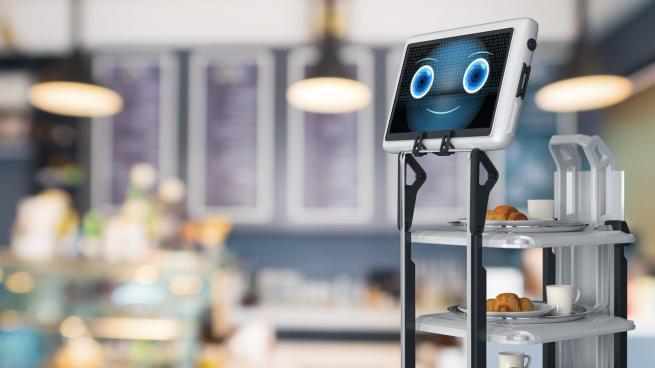
The food delivery industry is at a crossroads, facing unprecedented challenges that demand innovative solutions. A recent Wall Street Journal article highlighted the struggles food delivery apps face as they navigate new wage-increase requirements with raised fees. This illustrates the growing challenges the food delivery industry faces. Consumers are increasingly frustrated by rising fees and declining service quality, which negatively impacts customer satisfaction and restaurant orders. Amid these challenges, robotics emerged as a transformative solution.
The Restaurant Industry’s Resilience
The restaurant industry has shown remarkable resilience through various challenges, including economic downturns and the COVID-19 pandemic. During the pandemic, for instance, restaurants quickly pivoted to takeout and delivery models to sustain their operations, demonstrating adaptability and innovation in the face of adversity. According to the National Restaurant Association, 110,000 restaurants closed permanently or long-term in 2020, yet the industry continued to evolve, finding new ways to reach customers and maintain business.
However, the current pressures from increased wages and operational costs pose a significant threat. An article from Bloomberg discusses the constant battle over who is covering the cost of increasing workers’ wages. With the minimum wage rising in many states and the push for a federal increase, restaurants are grappling with higher payroll expenses. This issue is compounded by inflation, which raises the cost of ingredients and supplies, further squeezing profit margins. To sustain growth and profitability, the industry must adapt to these evolving conditions.
How Innovative Technology is Transforming Restaurant Operations
Technology has historically transformed the restaurant industry, creating new standards for how businesses operate and serve their customers. The introduction of online ordering systems revolutionized the way customers interacted with restaurants, making it easier and more convenient to place orders from home. Delivery apps further extended this convenience, bringing meals directly to customers’ doorsteps with just a few taps on a smartphone. These innovations not only enhanced customer experiences but also opened up new revenue streams for restaurants, helping them to thrive in a highly competitive market.
Now, the industry is witnessing the next major shift: the adoption of robotics. This technology promises to take restaurant operations to a new level of efficiency and innovation. Robots are being integrated into various aspects of the food and beverage sector, from food preparation to delivery and customer service. In the kitchen, robotic systems can handle repetitive and precise tasks such as chopping vegetables, cooking meals, and assembling dishes. This automation ensures consistency in food quality and frees up human staff to focus on creative and high-value activities. A study by Allied Market Research projects that the market for food robotics will grow from $2 billion in 2020 to $5 billion by 2030, indicating the increasing adoption and investment in this technology. On the front lines, service robots like Matradee are being employed to deliver orders to tables or directly to customers’ homes, providing a seamless and efficient dining experience. As these technologies become more advanced and affordable, their adoption is expected to become more widespread, fundamentally transforming the way restaurants operate and interact with their customers.
Benefits of Robotics and Automation
- Operational Efficiency: Robotics can streamline food preparation and delivery processes, reducing wait times and ensuring consistent service quality. Automated systems can handle repetitive tasks with precision, freeing up human staff to focus on more complex and customer-facing roles.
- Cost Savings: Implementing robotics can lead to significant cost savings by reducing labor expenses and increasing productivity. According to the Association for Advancing Automation, robotics can cut costs by 17.71%. Robots can operate continuously without breaks, leading to higher output and lower operational costs over time.
- Enhanced Customer Experiences: The speed and consistency provided by robotic systems can enhance customer satisfaction. Prompt and reliable service can lead to higher customer retention and positive word-of-mouth, boosting overall business performance.
Strategies to Future-Proof the Industry
- Investing in Innovation: Continuous investment in cutting-edge technology and automation is crucial for future industry resilience. By staying ahead of technological trends, restaurants can ensure they remain competitive and responsive to market demands.
- Staff Training and Adaptation: Workforce training programs are essential to ensure the seamless integration of robotics. Employees need to be skilled in operating and maintaining robotic systems, as well as adapting to new roles that complement automated processes.
Robotics has the potential to address the current challenges in the food delivery industry, offering solutions for operational efficiency, cost savings, and enhanced customer experiences. The long-term benefits of adopting robotics and automation are clear: sustainability and growth for the restaurant industry. As the industry evolves, embracing innovation is key to solving its major challenges. Those who fail to adopt technologies like robotics to improve efficiency risk being left behind in an increasingly competitive market.








